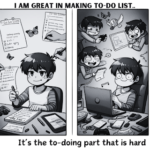When I first started my job, I was the eager newbie, ready to impress and make my mark. Saying “yes” seemed like the fastest route to success and acceptance. Whether it was taking on extra shifts, jumping into projects at the last minute, or handling tasks well outside my job description, I was your go-to “yes” person. But, as I quickly learned, always saying yes came with its own set of challenges.
The Burden of Yes
At first, saying yes to everything felt empowering. It felt like I was proving my worth and demonstrating my eagerness to contribute. However, this soon took a toll on my personal and professional life. The constant pressure to perform and the fear of disappointing others led to burnout and stress. I wasn’t just helping; I was harming my own productivity and well-being by not setting clear boundaries.
The Turning Point
Things changed when one of my coworkers noticed how overwhelmed I was. She saw that others were taking advantage of my inability to say no, and she stepped in. This coworker began to advocate for me, subtly deflecting requests from others and giving me the space to breathe. It was a wake-up call. I realized that if I didn’t start setting boundaries, I would never be able to sustain my pace without compromising my health and happiness.
Embracing the Power of No
Learning to say no is an art. It’s about respecting yourself and your limits. It’s about understanding that saying no doesn’t make you uncooperative or lazy; it makes you smart about managing your energy and priorities. Here are some strategies I’ve learned along the way:
Communicate Clearly:
Offer Alternatives:
Understand Your Priorities:
Practice Self-reflection:
Why Saying No Can Mean Saying Yes to Yourself
Saying no isn’t just about refusing requests; it’s about affirming your own needs and values. It’s about making intentional choices that align with your career goals and personal well-being. In a recent article on SelfCraftedLife.com, the discussion about “The Paradox of Loving Too Much: When It’s Time to Draw the Line” resonates deeply with my experiences. It underscores the importance of caring for ourselves and recognizing when our generosity becomes self-sacrifice.
As I continue to navigate my career, I am learning that the power of no is not just a shield to protect my time, but a tool to shape my life’s narrative. I am more than just a worker; I am a person with limits, preferences, and the right to manage my professional journey. Each no is a yes to my health, balance, and peace of mind. And with each no, I grow stronger, more confident, and more in control of my life.
Setting boundaries has been one of the most challenging yet rewarding skills I’ve developed in my professional life. If you’re like me, someone who struggles to say no, remember: your well-being is worth advocating for, and sometimes, saying no is the best yes you can give yourself.


